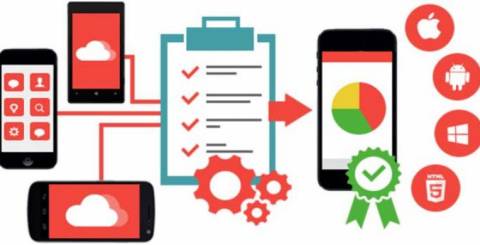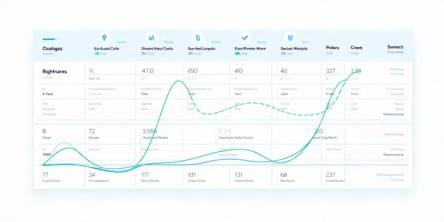5 Tips to Create a Bug-Free Mobile App

Mobile app development is a hugely lucrative business and the industry is thriving with thousands of app launches daily on the App Store and Google Play Store. But the success of each app is closely tied with the overall quality of build, the user experience and gratification.
User experience is essentially the sum total of the users’ app interactions. Bearing in mind that mobile users interact with a number of apps daily, are digitally savvy and used to exceeding levels of performance and quality, the least that a new mobile app needs to ensure is an error-free experience. With tight timelines, resource and budget crunch, some developers often cut corners ending up with a sub-par application that fails user expectations and is rejected by the app stores.
What is the secret to building high quality and bug-free mobile apps? We bring you a check-list for maintaining the highest levels of quality assurance throughout your build cycle.
1. Beta testing
QA processes should be built into the development cycle right from the get-go. One way is alpha testing – that is when your mobile app undergoes a rigorous in-house testing process carried out by QAs, developers, peers and testers. This usually aims at fixing the more prominent bugs and glitches.
However, it is impossible to replicate every scenario, configuration, test query etc. in-house. This is why you need beta testing. You could opt for closed beta tests involving a smaller group comprising maybe a few end users, product managers, other internal stakeholders. Or you could also use a larger set of open beta testers to optimize the QA process. It could range anywhere between 1000 and 20,000 valid beta users.
Beta testing has an obvious edge because it lets you validate your concept fast and verify that the app is moving in the right direction. Source your beta testers through multiple, valid channels like Twitter, online forums, Quora, Hacker news, and scores of beta testing forums and websites.
2. Secure apps from the ground up
Security is of utmost concern and importance to ship a compliant app that is not vulnerable to the various threats that abound the cyberspace. Vulnerabilities are often caused by developer errors, failure to test the code adequately, or hacking threats. Test your code for vulnerabilities and run source code scanning. You can encrypt your app code and make it hard to access. Obfuscation and minification are commonly used measures coupled with modern, well supported algorithms and API encryption.
Also protect your customer data by implementing a good mobile encryption policy.
3. Automated testing services
There are a number of automated testing services, tools and forums available online to help you generate detailed reports of your app’s performance. Xamarin Test Cloud, for instance, is one such service that automates app testing on 2,000 real devices in the cloud. It simulates and tests all user actions including gestures and finds performance areas on any OS.
Apart from Xamarin, there are hundreds of tools and websites online that provide a variety of automated tests and make your life easier.
4. Google Analytics
Adding Google Analytics to your app will help you improve the app incrementally with data and performance analysis. You can understand the audience, their characteristics, measure user actions, in-app payments, revenue, and customize your reports to that end. Google Analytics also provide data on app crashes, retention rates and daily active user data.
5. Seek expert testers
You might occasionally need to consult expert testers/app development gurus who have been there and done that. This extra initiative and investment can actually go a long way in building a quality app if you rope in your expert right at the start of the project to iron out any kinks at the concept level. You can liaise with freelance consultants or companies that specialize in such high-level advice and consultancy projects.
For App Store and Play Store success you not only need a bug-free application but also build cross-platform applications that give a great user experience across devices and OS.
You can benefit from professional Xamarin mobile development services to ship native iOS, Android and Windows apps. Do you have any other suggestions for making a high-quality mobile app? Please share your views in the comments section.
Similar Articles
Building lending software isn’t just a technical project—it’s a business decision. Whether you're a fintech founder or part of a traditional lending institution trying to go digital, three questions will shape everything that follows
Learn why robust security is crucial for super app development. Explore key strategies and best practices for mobile app development security.
Walkie-talkies with an extensive reception capacity have changed significantly when it comes to portable communication by displaying cutting-edge features with seamless connectivity that covers more than just the state
USB-C technology has revolutionized the way we charge our devices, offering faster charging speeds, higher power delivery, and universal compatibility across multiple devices
Discover expert mobile app development strategies to create a viral app that attracts users and boosts engagement
Optimize app localization for iOS users across the EU with language, cultural, and regulatory adaptations. Engage users and boost retention with these tips!
Discover the top 10 mobile app development trends of 2024! Explore 5G, AI, AR/VR, blockchain, and more to stay ahead in the ever-evolving app development landscape.
With its triple-lens design and fantastic photo and video quality, the iPhone 11 Pro Max is extensively acknowledged for its superior camera system. But problems can occur with also one of the most advanced technologies. If you're having issues with the iPhone 11 pro max camera lens, knowing the typical problems and how to repair them
Protect your app from threats with AppSealing's robust, all-inclusive security solution. Safeguard user data, ensure compliance, and maintain top performance.









